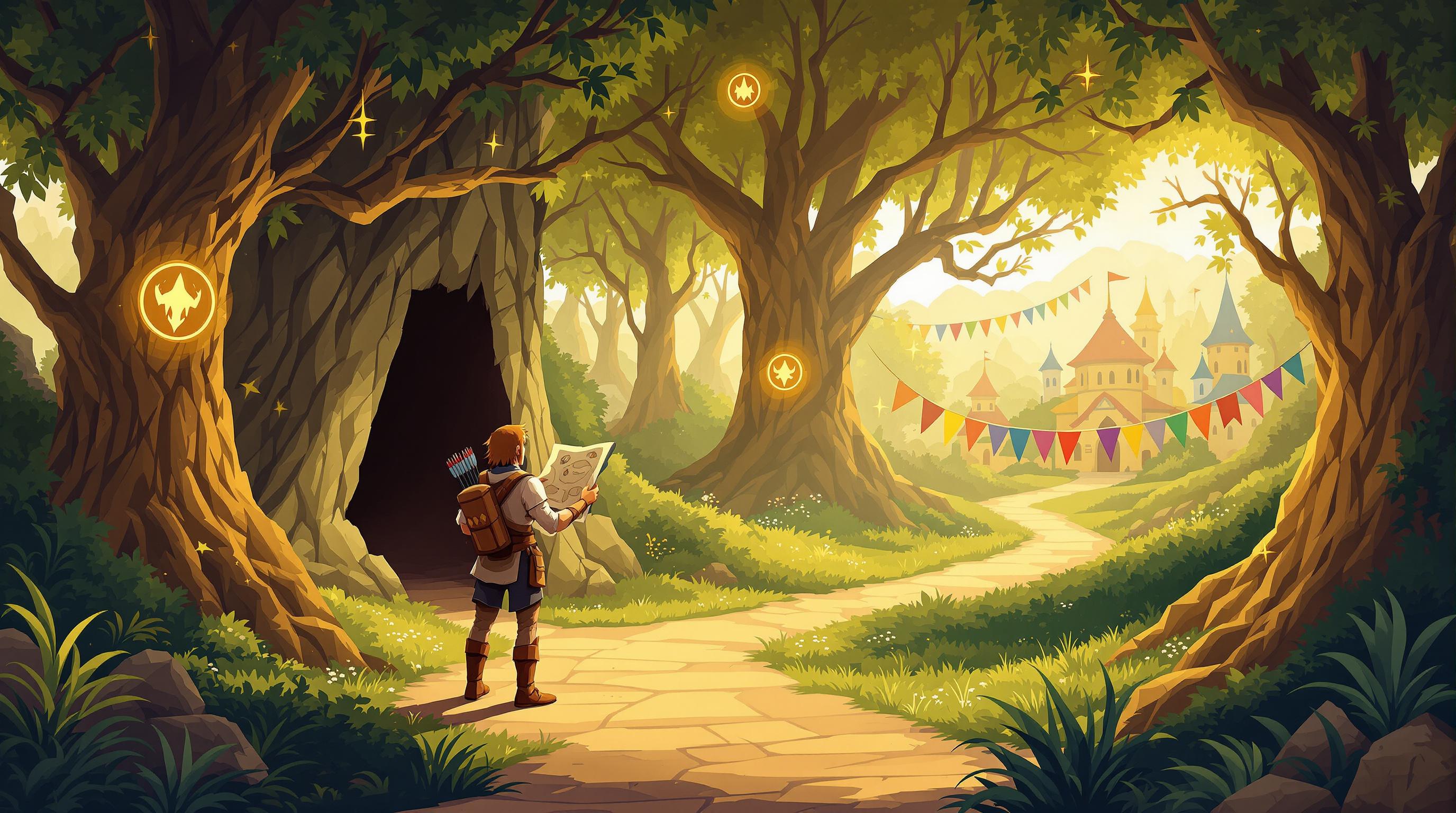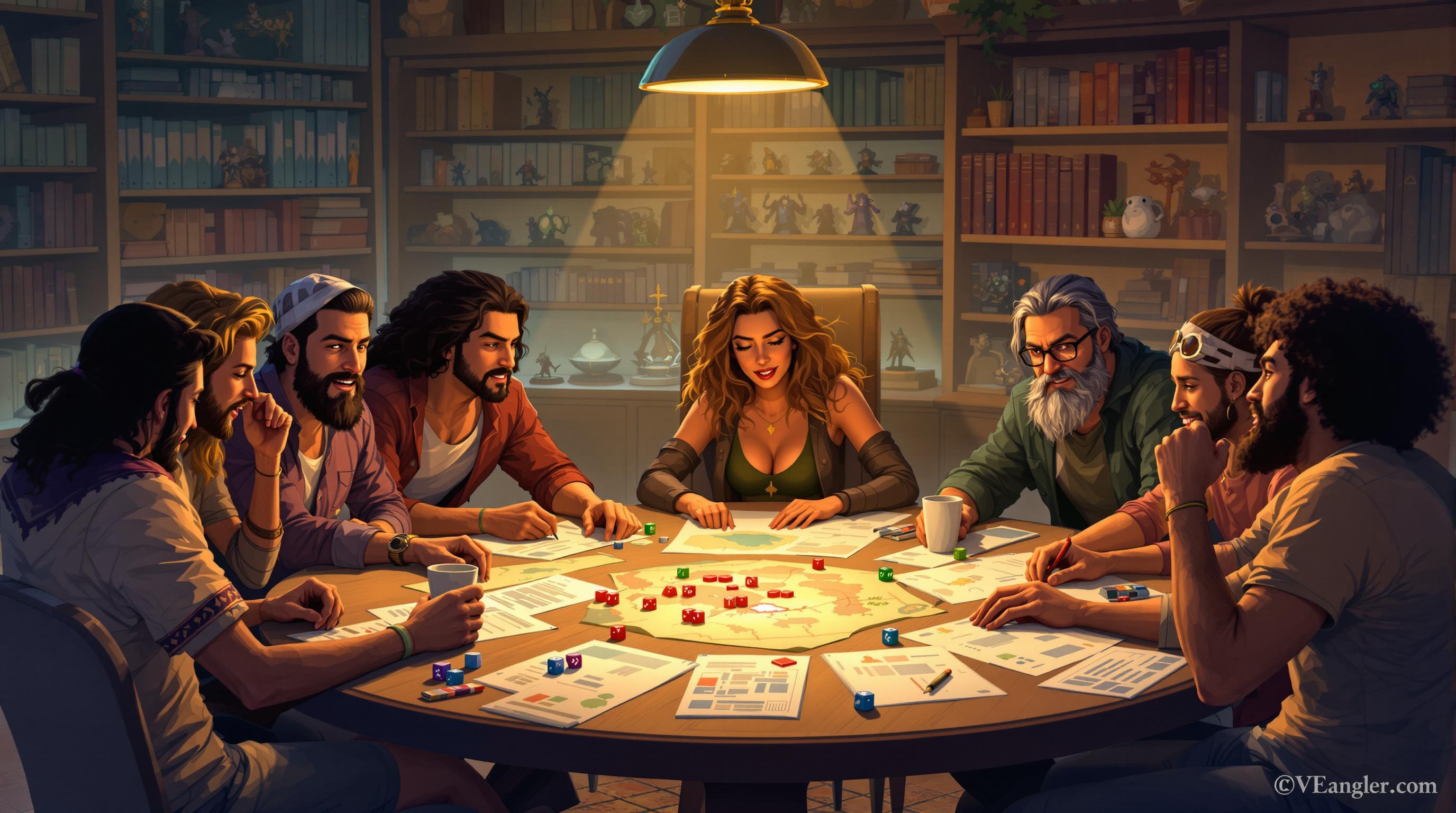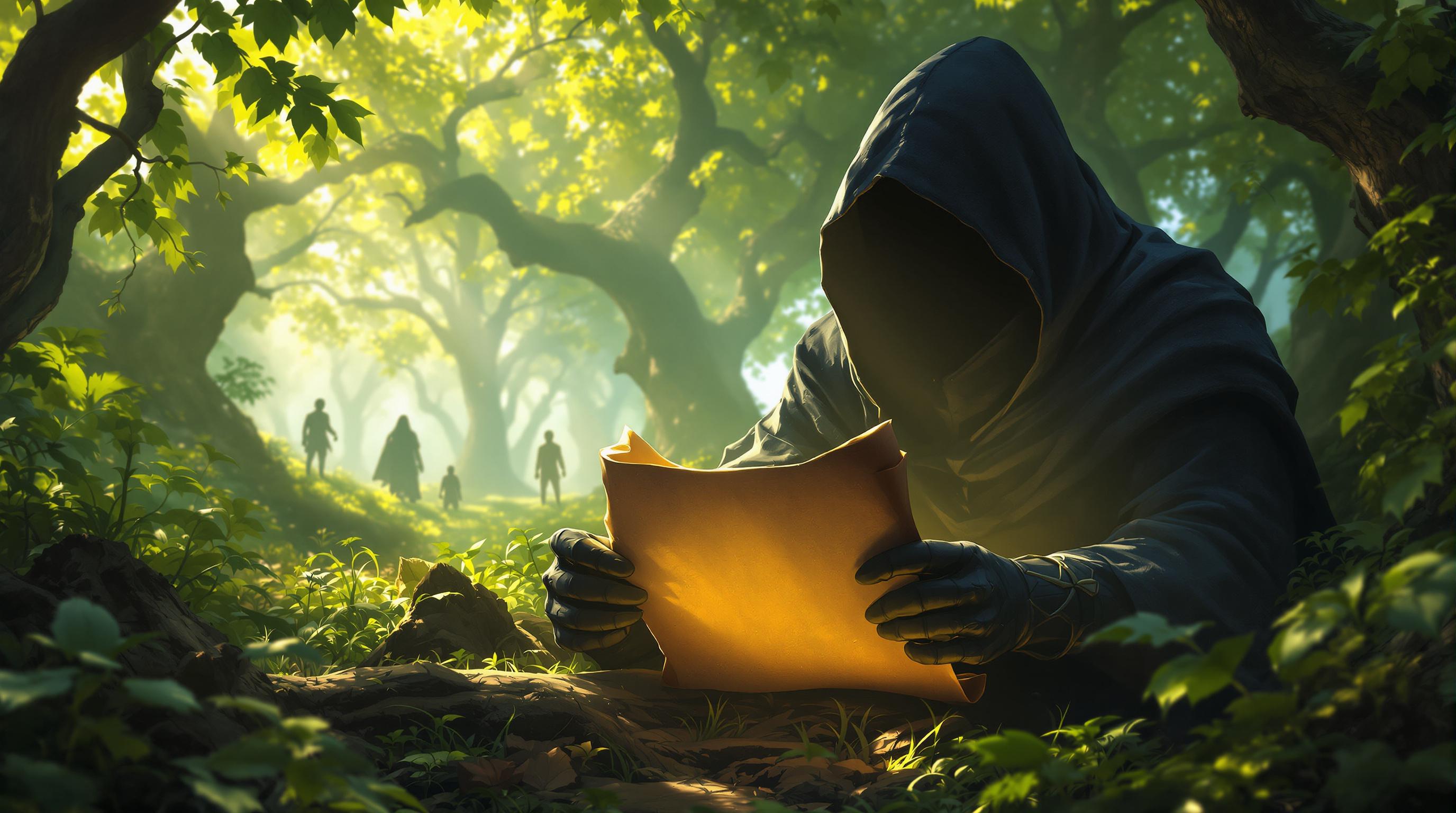Magical ecology blends magic with natural systems, creating ecosystems where magical energy influences plants, animals, and environments. This concept enriches RPG worlds by integrating magic into the fabric of the setting, offering unique gameplay and storytelling opportunities. Here’s what you’ll learn:
- What is Magical Ecology? Ecosystems shaped by magic, like plants thriving on arcane energy or creatures evolving magical traits.
- Why It Matters: Adds depth to world-building, impacting resource management, exploration, and cultural development.
- Key Features: Magical biomes (like enchanted forests or glowing swamps), dynamic energy flows, and unique resources (e.g., spirit wood, magical minerals).
- Gameplay Applications: Challenges like managing scarce magical resources, adapting to magical hazards, and interacting with magical creatures.
Use this guide to design immersive worlds where magic and nature coexist seamlessly, creating richer experiences for your players.
Related video from YouTube
Key Ideas Behind Magical Ecology
How Magic Shapes Nature
Magic reshapes natural systems by introducing supernatural energy that disrupts traditional ecological patterns. Instead of relying solely on sunlight or organic energy, magical environments develop entirely new energy flows, altering how life evolves and interacts.
Here’s a breakdown of how magic changes ecosystems:
| Aspect | Impact |
|---|---|
| Energy Sources | Magic replaces or enhances natural energy cycles, creating new dependencies. |
| Species Traits | Creatures evolve magical abilities alongside their physical adaptations. |
| Resource Patterns | Regions shift between magical abundance and scarcity, impacting survival. |
These changes lead to fascinating gameplay opportunities, like exploring a glowing swamp where bioluminescent fungi sustain creatures powered by arcane energy. Such settings challenge players to think differently about survival, resources, and strategy.
These magical influences ripple through ecosystems, introducing both complexity and unpredictability, setting the stage for deeper exploration.
The Effects of Magic on Ecosystems
The presence of magic in an ecosystem creates dramatic shifts that can define RPG worlds [1]. When magical forces mix with natural ones, they generate patterns that game masters can use to build dynamic and engaging settings:
- Interactions between magical and natural species, driving unique adaptations.
- Shifts in how resources are distributed and energy flows through the environment.
- Changes in ecosystem stability, where magic can either disrupt or enhance balance.
"A Magical Society: Ecology and Culture provides real-world phenomenon for a fantasy game, including magical ecologies of creatures that exist solely off of eating magic." - EN World [2]
Building Magical Ecologies for RPG Worlds
Magical Features in Different Biomes
Different biomes bring their own flair to the magical elements of your RPG world. The environment shapes magical creatures, phenomena, and available resources, giving each region a distinct flavor. These features can spark creative challenges and narrative twists, ensuring no two areas feel alike.
| Biome | Magical Features | Resources |
|---|---|---|
| Forest | Living root networks, enchanted trees | Mystical herbs, spirit wood |
| Desert | Heat-based magic, shimmering crystals | Sun crystals, magical minerals |
| Tundra | Ice preservation, frozen energy | Frozen essences, eternal ice |
| Swamp | Magic of decay, transformative forces | Alchemical fungi, mutation materials |
Keeping Magic and Nature in Balance
To craft a believable magical world, it's crucial to balance supernatural forces with the natural environment. The book A Magical Society: Ecology and Culture highlights how ecosystems can include creatures that thrive on magical energy [1].
"A Magical Society: Ecology and Culture provides real-world phenomenon for a fantasy game, including magical ecologies of creatures that exist solely off of eating magic." [2]
This balance works best when magical energy feels like a natural part of the ecosystem. It should flow seamlessly, influencing the environment without overwhelming it, creating a world where the natural and the supernatural coexist.
Using Magical Resources in RPGs
Magical environments are treasure troves of resources that can enrich gameplay, especially through crafting and exploration. To make these resources feel organic, tie them to the ecosystem they belong to:
| Resource Type | Usage | Ecosystem Effect |
|---|---|---|
| Enchanted Plants | Potions, tools, crafting | Renewable with careful use |
| Magical Minerals | Powering gear, rituals | Finite, requires management |
| Creature Materials | Spell components, unique items | Impacts population balance |
For example, enchanted forests might yield wood that resonates with spells, while magical mountains could contain ores that store energy. These resources not only enhance crafting but also introduce dilemmas around scarcity and conservation, adding layers of strategy and immersion for players.
sbb-itb-b8b00a5
Using Magical Ecology in Campaigns
Adding Magical Ecosystems to World-Building
Magical ecosystems can add depth to your campaign's world-building by blending supernatural energy with natural environments. Start by pinpointing magical hotspots - places like ley line intersections or ancient battlegrounds - where mystical forces directly shape the surrounding ecosystem.
| World-Building Element | How to Use It | Effect on Campaign |
|---|---|---|
| Magical Hotspots | Map areas with concentrated energy | Encourages exploration and discovery |
| Creature Habitats | Strategically place magical creatures | Shapes encounter variety |
| Resource Nodes | Scatter rare magical materials | Sparks economic and political intrigue |
These elements can also influence nearby communities. For instance, a village near an enchanted forest might have rituals for safely gathering magical herbs, while a settlement near volatile ley lines could develop unique defenses. These ecosystems naturally create opportunities for storytelling and player problem-solving.
Gameplay Challenges from Magical Ecology
Magical ecosystems bring fresh challenges that push players to think beyond traditional combat. They introduce dynamic hurdles that demand creativity, resource management, and strategic planning.
| Challenge Type | Example | Player Impact |
|---|---|---|
| Environmental Hazards | Storms caused by unstable ley lines | Requires careful positioning and movement |
| Resource Management | Shortage of rare magical herbs | Encourages exploration and trade |
| Creature Interactions | Symbiotic magical creatures | Promotes negotiation and diplomacy |
| Climate Effects | Seasons altered by magic | Forces players to adapt travel plans |
To make these challenges feel authentic, tie them closely to your world’s lore. For example, overharvesting magical plants might trigger defensive reactions from the ecosystem itself, forcing players to weigh short-term gains against long-term consequences.
For more ideas, check out the TTRPG Games Directory, which highlights games that successfully weave magical ecology into their mechanics and storytelling.
Examples of Magical Ecology in RPGs
RPGs That Use Magical Ecology
Many tabletop RPGs integrate magic directly into the natural world, creating fascinating ecosystems. In Dungeons & Dragons, the Feywild demonstrates how magic can shape nature, featuring emotion-sensitive plants and ever-changing landscapes. Similarly, Pathfinder introduces magical storms that influence the migration of creatures, adding unique challenges where players must carefully plan their journeys around unpredictable weather.
| Game System | Magical Ecology Feature | Example |
|---|---|---|
| D&D 5E | Feywild Realm | Environments that react to magical forces |
| Pathfinder | Weather Systems | Magical storms impacting travel and encounters |
| A Magical Society | Magic-Consuming Species | Creatures sustained entirely by magical energy [2] |
These examples can serve as inspiration for crafting your own magical ecosystems.
Step-by-Step Guide to Designing Magical Ecology
-
Choose a Base Biome
Start with a natural biome - think about its climate, terrain, and native species as a foundation. -
Identify Magical Energy Sources
Incorporate magical energy hotspots into your design, such as:- Ley line intersections
- Ancient ritual sites
- Magical springs
- Planar boundaries
-
Transform the Ecosystem
Decide how magic alters the environment, from plant and animal adaptations to weather and resource cycles:Aspect Focus Example Flora Adaptation How plants interact with magic Trees with crystal-like leaves that store magical energy Fauna Evolution Animals' magical traits Herbivores that sense the magical properties of plants Resource Cycles Magic's influence on cycles Seasonal shifts in magical energy availability -
Maintain Balance
Establish clear rules for how magic interacts with nature. For instance, as explored in A Magical Society: Ecology and Culture, define relationships between magical forces and the natural world [1][3].
For additional ideas, check out the TTRPG Games Directory, which features games with creative magical ecosystems.
Final Thoughts and Resources
Key Takeaways
Magical ecology adds depth to fantasy world-building by blending supernatural elements with natural environments. To make it work effectively, consider these key ideas:
- Balance magical and natural cycles to maintain harmony.
- Design energy flow systems that impact local ecosystems.
- Create magic-based resources that fit seamlessly into gameplay.
- Develop magical features that enrich storytelling and engage players.
By focusing on these ideas, you can dive into magical ecology within existing RPG systems or craft your own imaginative magical settings.
Discover RPGs with Magical Ecology
The TTRPG Games Directory is a great resource for exploring games that incorporate magical ecology. From classics like D&D and Pathfinder to inventive indie RPGs, you'll find various ways magic interacts with nature, sparking ideas for your campaigns.
For a deeper dive, try blending real-world ecological concepts with fantasy elements to create systems that feel grounded yet still magical [1]. A fantastic resource is A Magical Society: Ecology and Culture, which explores how creatures can thrive purely on magical energy. This serves as a solid starting point for building your own magical ecosystems [2].
"A Magical Society: Ecology and Culture provides real-world phenomenon for a fantasy game, including magical ecologies of creatures that exist solely off of eating magic." [2]


